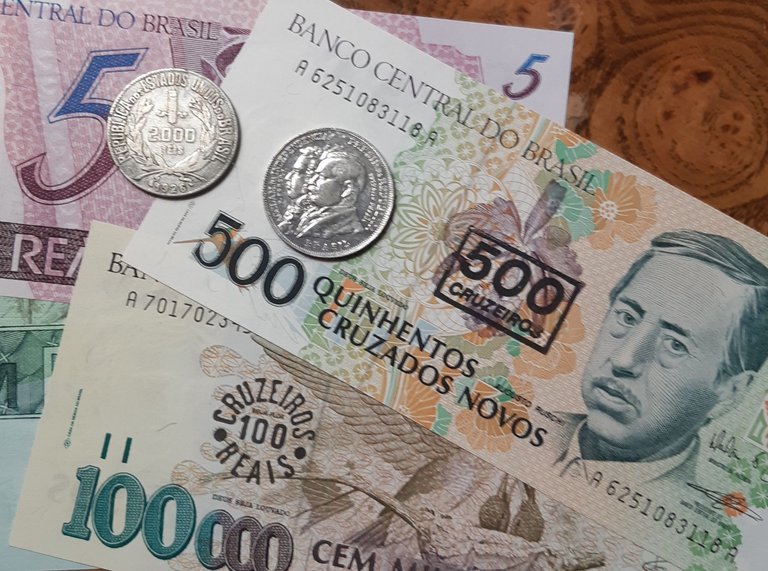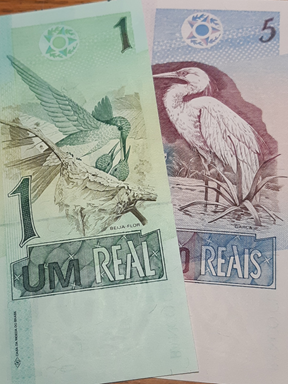Heeeyho Readers! Bringing a bunch of old coins today.
Today's post is multifaceted. Could be a #history post, because there's a fair bit of Brazilian past here. Or maybe an #economy-philosophy write-up to discourse on the non-sense of fiat currencies and the importance of sound money. It's not limited to #silvergoldstackers, though might be interesting for that community.
After much thought, I opted to post on #hivecollectors — it's about a collection none the less. Inspiration came after @duskobgd's post earlier this week about his collection of WW-II banknotes (check). To bring some diversification instead of also showing a collection of banknotes (that I have plenty), this post will showcase a nearly complete lineage of Brazilian coins. If you are into cryptocurrencies, there's a great chance the history of money/currencies interest you.
A collection starts
Dad kept a fairly old red Hornimans tea caddy his entire life before passing it to me. The inside was filled with old Brazilian coins dating as far as the early XX century — were his grandma's, he says — and beyond. One day I had to present a history project in school, so, for some reason, the coins were my theme. I combined dad's coins with a bunch of other donations from grandmas and pas, plus several banknotes from various family members. The collection grew quite large out of nowhere.
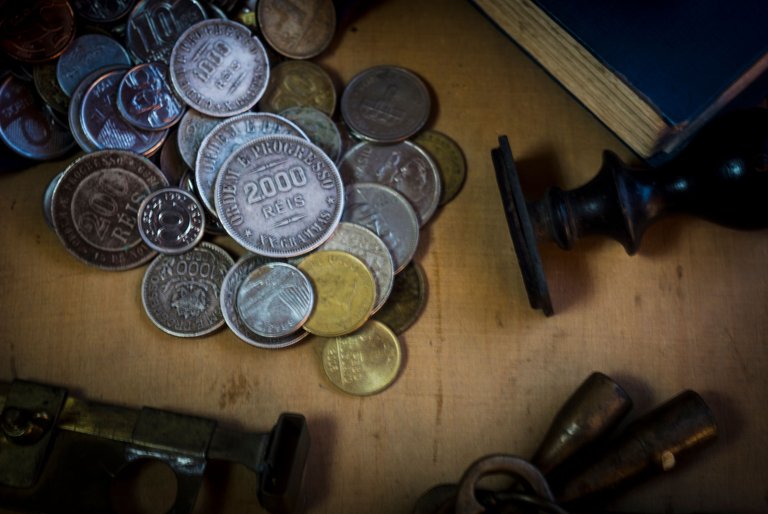
Only much later I understood (?1) the real history of money, the difference between money and currency, the non-sense of fiat currencies, the logical reasoning behind Bitcoin and its revolution to our relationship with money and markets. Object for another post? Maybe.
Today I wanna talk about my collection of coins and bring a bit of Brazilian history to Hive. Those who live in relatively stable countries won't believe the absolute madness of living in a country who's had ten different monetary standards in 100 years.
Brazilian coins (1879 - present)
Alright, showing each and every coin is impossible. I first thought about bringing a handful for each decade, but some remained the same design, making the photos repetitive. A second option would be to show examples for each monetary standard: we've had 10 different standards, which is messy as hell.
The best way is to divide the collection in Brazilian political periods, that way it's more interesting for readers in terms of history.
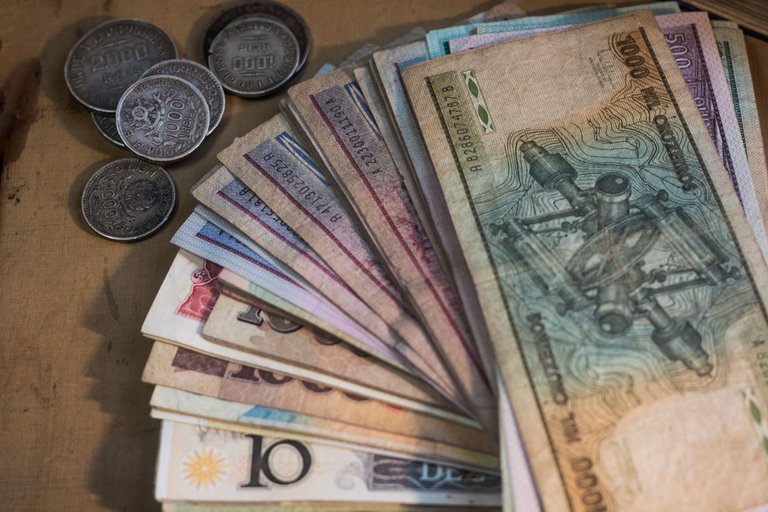
Let's start with the imperial period (1822 - 1889) because I don't have pre-imperial coins to present {laughs}. Would love to have Portuguese gold coins. Anyways.
Empire of Brazil (1822 - 1889)
The oldest coin in my collection is 100 Réis, made of nickel, from 1879 – ten years before we became a republic. The back side has the empire's coat of arms below the Empire of Brazil inscription. I had a beautiful silver coin from the same period (1888), but that's been stolen. Bastards!
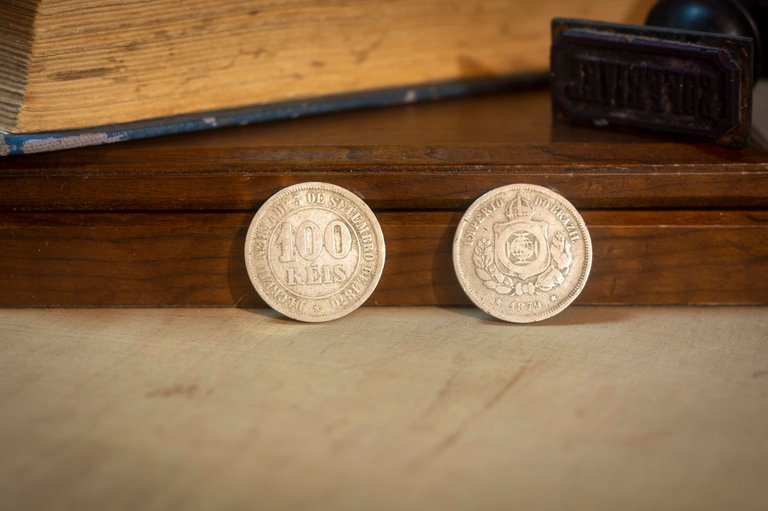
First Brazilian Republic (1889 - 1930)
After usurping the Emperor Pedro II, Brazil became officially the Republic of the United States of Brazil. The commonly called old republic is established. We kept the same monetary standard, despite heading for a period of turmoil.
I have several coins from the period, with the most important being the following #silver Réis from the early XX century. They are all 900 silver.
Below, from left to right: two equal 2000 silver Réis from 1907 and 1911; 1000 silver Réis from 1908; three equal 1000 silver Réis from 1912 and 1913.
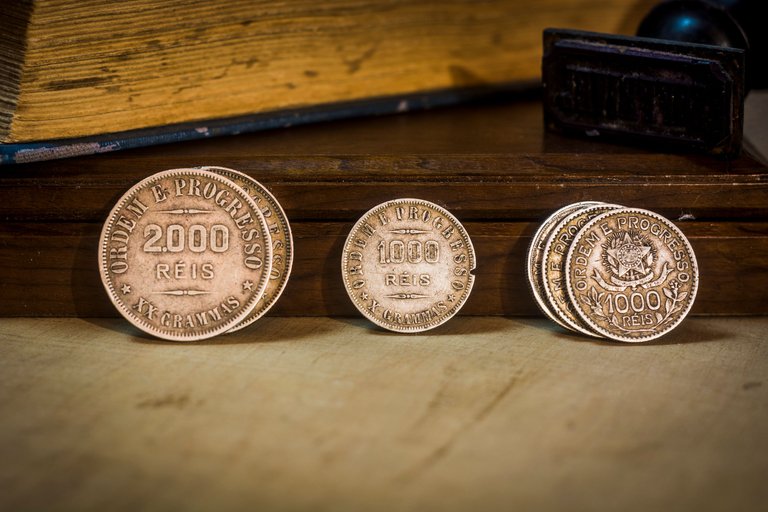
The following silver coin is pretty special. It celebrates one hundred years of the independence of Brazil (1822 - 1922). Face value is 2000 Réis and both the Empire and Republic coats of arms are on the back.
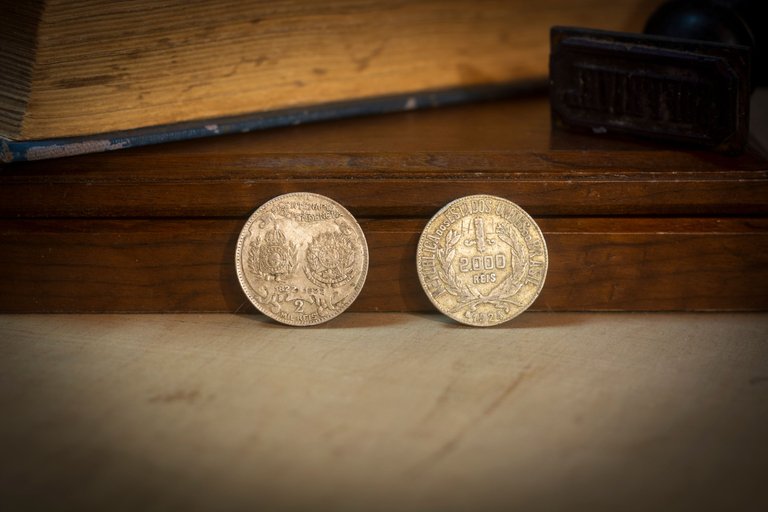
Vargas era (1930 - 1945)
Brazilian republic went kaput with the revolution of 1930, marking the so-called Vargas Era. President Getúlio Vargas governed the country during the period, all the way through WW-II. Let's say this period was... err.. difficult for most of the world. Silver coins disappeared and we began to use cheap copper/nickel coins.
That's always the case when Governments need more money: they debase/unpeg sound money to issue more coins; if those coins are too expensive to make, they use cheaper materials and so on until it's worth nothing.
To exemplify the period I selected coins from 1931 to 1949. Readers will notice (second picture) that our monetary standard changed from Réis to Cruzeiro.
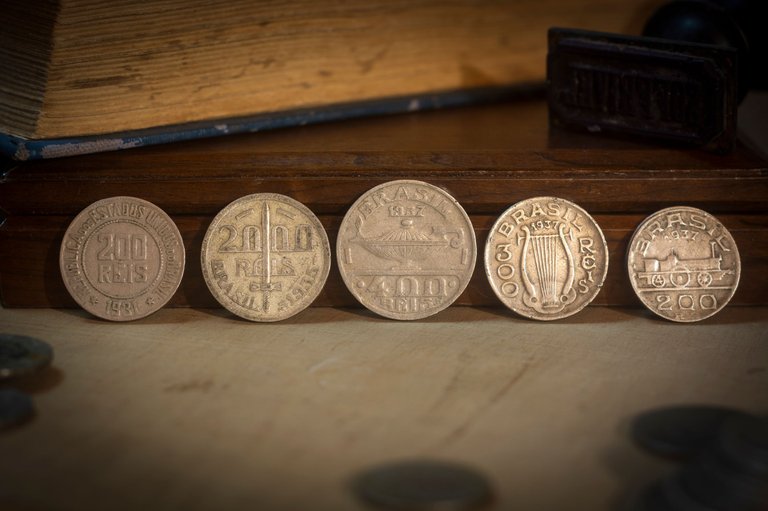
The above coins are among the last versions of Réis before we changed to Cruzeiros. Dates are 1931, 1935, 1936 and the last two 1937 – all copper/nickel. Only God knows why they changed design so much in such a short period of time.
In 1942, the Brazilian government decided to create a new monetary standard called Cruzeiro, with the fractions named Centavos. As always, they needed to standardize and stabilize our economy. Cof cof stop printing cof cof.
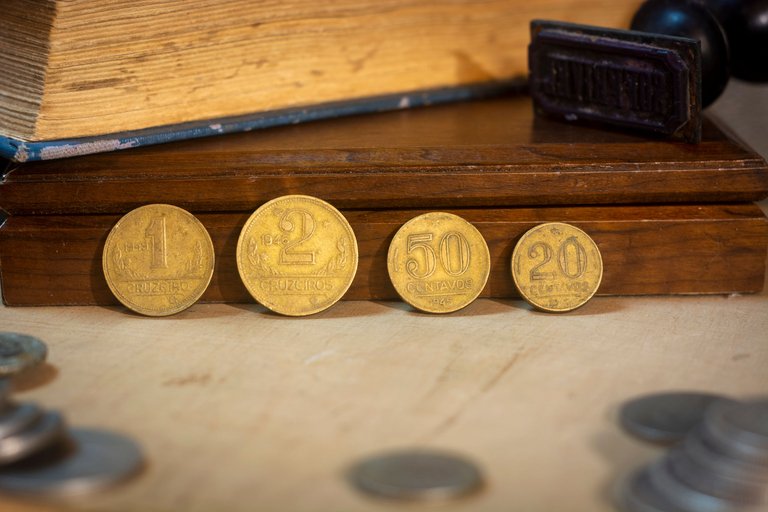
The above coins are from the mid 1940's. Our new standard (Cruzeiro) lasted until 1967, when we entered a period of total turmoil in terms o monetary standards. I won't go into details because it's quite wild.
Essentially, the Cruzeiros later gave place to Cruzeiros Novos (1967) then back to Cruzeiros (1970); Cruzados (1986) replaced the Cruzeiros, followered by Cruzados Novos (1989); we go back to Cruzeiros (1990). Confusing? Yes!
Populist Republic (1946 - 1964)
Short-lived, chaotic, and unstable. Elections are back. Vargas is elected in 1950; kills himself in 1954. Capital of Brazil (Brasilia) is created. Brazil wins the Soccer World Cup in 1958. Inflation rises. Cold war and fear of communism take place. It's gonna get crazy.
I only have four coins from the period – all Bronze/Aluminum. These are from 1954 and 1955.
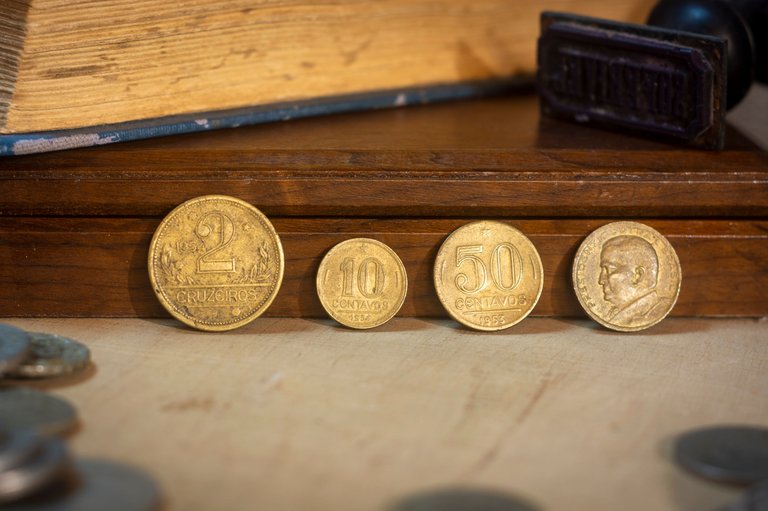
Military Regime (1964 - 1985) & New Republic (1985 - Present)
I told you things would get crazy! Fearing communism, on April 1st (1964) the Brazilian Armed Forces decided they were the saviors this time. As it's always the case with Governments, there's always that one group who thinks: "in my turn problems will be solved". Never the case. Censorship, torture, more inflation, new monetary standards, oil crisis, prohibited imports to incentivize the national industry, et cetera. We established a new constitution in 1888 and held democratic elections in 1889, but the period is remarkably known for the out-of-control hyperinflation.
To exemplify the period, I added below examples from the Military Regime except for the last one (far right) — that's from the New Republic era. From left to right you see: 10 Centavos* (1967), 2 Centavos (1969), 20 Centavos (1970), 1 Cruzeiro (1972), and 5 Cruzeiros (1991).
*Centavos is the fraction of a Cruzeiro
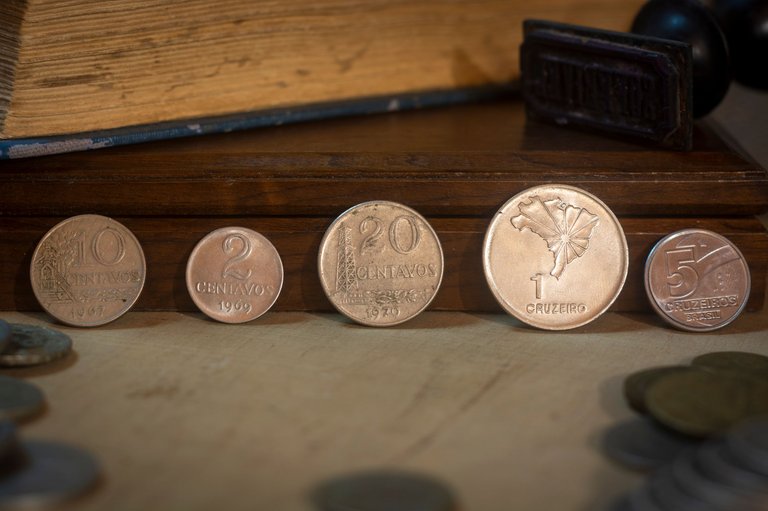
Coins from the period are somewhat boring and worthless. They are all made of stainless steel, reason why I only picked a few to photograph. Second reason: the 1980's in Brazil is known as the lost decade. Our inflation began to rise in 1979 with the second oil crisis and continued to rise throughout the 1980's and early 90's. We changed monetary standards faster than I change underwear, figure that! Inflation got as high as 2000% per year at some point. The bulk of my collection (both coins and papernotes) is from the period, simply because money outside the banking system was nearly worthless.
The last hope
Those who are into cryptocurrencies must know that every Government-issued currency is bound to failure at some point — plenty of examples in this very post. However, Brazil was so out of control that a bunch of sons of God themselves economists and politicians decided a complete reform was due. On July 1st (1994) our contemporary monetary standard is introduced, the Real.
To exemplify the Brazilian Real, I picked the very first 1 Real coin from 1994 (not in circulation anymore) and the current 1 Real coin. In circulation today we have: 1 Real, 50 Centavos, 25 Centavos, 10 Centavos and 5 centavos. There used to be 1 Centavo coins, but those have been removed from circulation along with the 1 Real note.
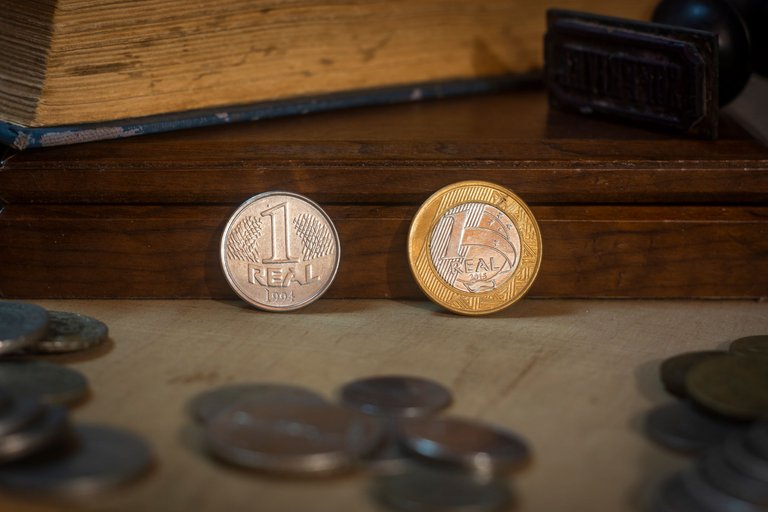
Uff, it's over!
What a giganormous post!
I'd like to end this post inspiring all those — especially younger folks — who are into cryptocurrencies, but aren't into the history of money, to go and study about the subject. Learning about money is the basis to understand Bitcoin. The write up you've just read, even full of simplifications and generalizations is a great testament of how Government money is... to say the least.. complicated and bound to failure.
Since its inception in 1994, the Brazilian Real has lost between 80-89% of its original purchasing power (depending on the study), and tends to keep on inflating. Meanwhile, Bitcoin's inflation diminishes every four years. Think about that.
I hope that you've enjoyed this collection, history, economy post. And if you see my Silver coin from 1888 somewhere, please return it asap {laughs}.
Peace
If you enjoyed this post consider leaving your upvote for a hot coffee.
Find me on Twitter: https://twitter.com/mrprofessor_
~Love ya all,
Disclaimer: The author of this post is a convict broke backpacker, who has travelled more than 10.000 km hitchhiking and more than 5.000 km cycling. Following him may cause severe problems of wanderlust and inquietud. You've been warned.

I'm Arthur. I blog about Adventure Stories, Brazil, Travel, Camping, & Life Experiences.
Follow me to stay tuned for more craziness and tips.
Posted Using InLeo Alpha


